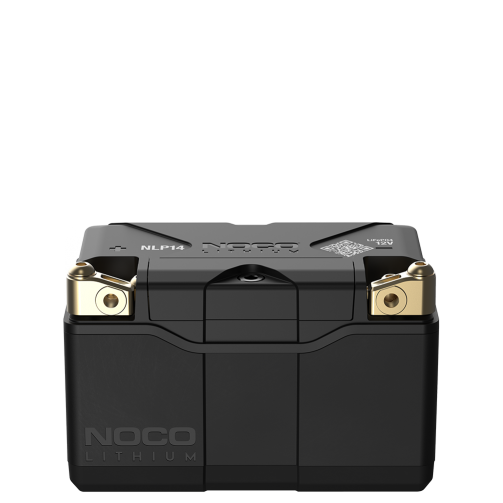My business is batteries... (Seriously, I sell and service batteries)
Lithium packs are made up of smaller cells in series to build up to the desired voltage; and in parallel to build up the required current - with an intelligent BCM to manage charge/discharge. There are few 'critical path' component in there; mostly in the BCM - that if they fail, the battery is no longer functional. Like any active electronic component, they can (and will) fail, and likely at the worst possible time. There's generally no warning when a small lithium pack fails... there's also no 'extra' cells to compensate for failing ones; nor the switching and intelligence to disable them...
Lead acid, be it AGM, gel or flooded - are simpler; but again, multiple cells built up to the desired voltage - 99.9% of the time in 2v blocks (3 cells for 6v, 6 cells for 12v, etc) - but the cells themself are sized for the current, so they are a much simpler internally. Failure modes for lead acid are pretty straight forward; they short out, dry out, or suffer physical damage... Sulfination and plate growth also reduce capacity, but that's more a factor of age then anything else. A load tester or conductance tester can see if they're drying out or starting to short (internal resistance goes down, so self discharge goes up, and capacity goes down); or if sulfination is reducing capacity. Plate growth usually shows either as internal shorting, or physical deformity of the case, depending on the construction of the battery itself. Lead acid will usually show signs it's failing (lower voltage under load - so slow cranking; diming lights, electrical 'gremlins') rather then just kick catastrophically.
Lithium's not the end-all be-all that some vendors have been selling it as - it's good technology, and has a place - but the shine is coming off a little... it doesn't last as long as advertised, and it's essentially not recyclable (25ish percent of a lithium battery (more or less - depending on specific chemistry) can be recycled, the rest is hazardous waste; 94-97% of a lead acid battery is recycled)... but Lithium is also lighter and more energy dense - for for weight and size concerns, it's a winner; it's also less affected by high temperatures, so high-heat applications make sense as well.
Back to the question - there's not a lot of testing available for small lithium... Conductance doesn't work; load testing is more likely to wreck the battery rather then give you useful information... larger lithium, over 100aH or so, often have CANBus ports so you can actively monitor state of health, etc - but for small packs, your best bet is to hope it doesn't strand you somewhere too awkward.













